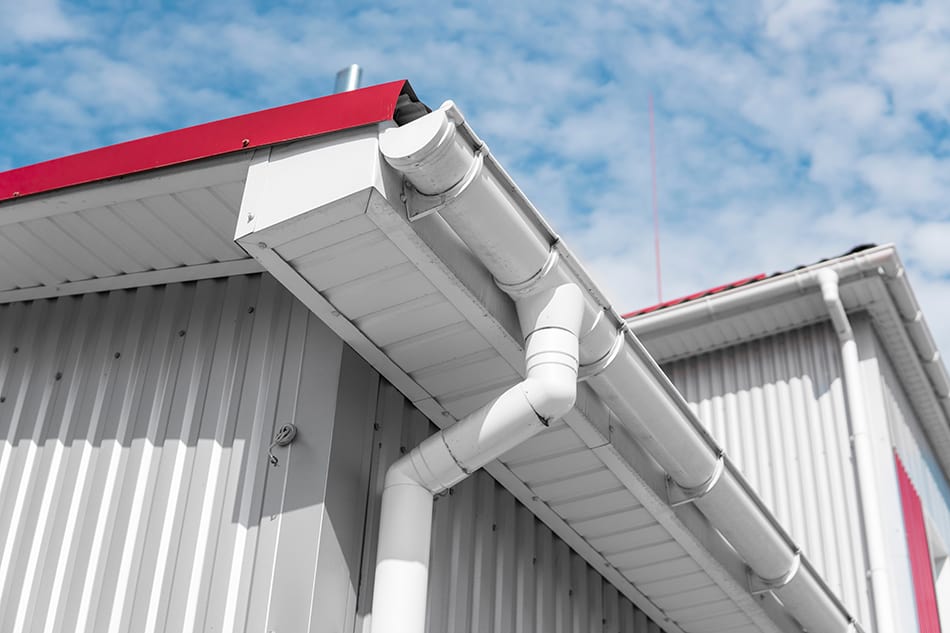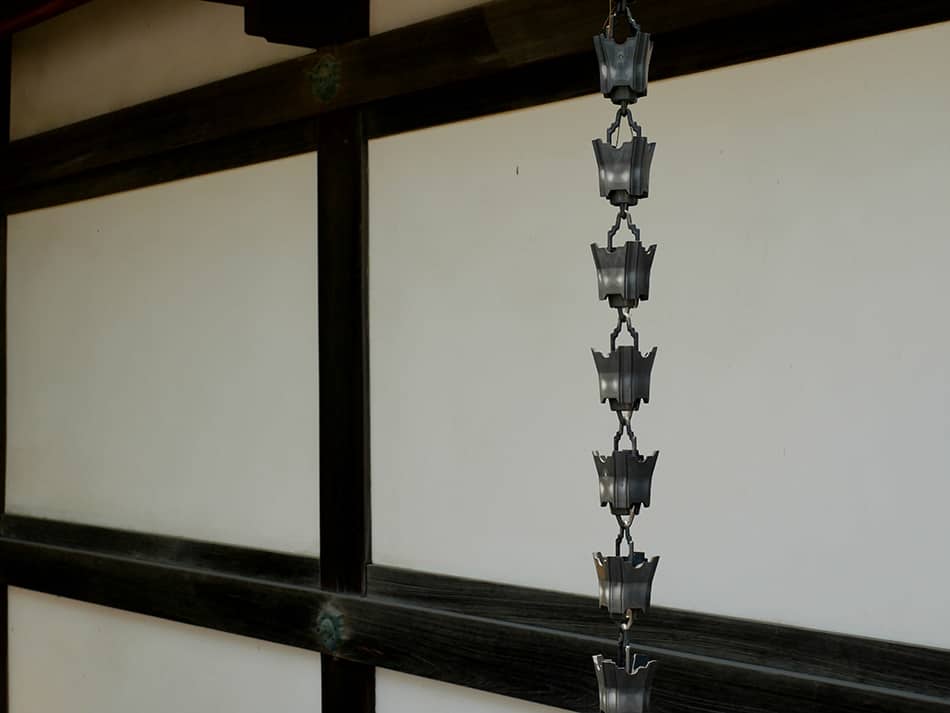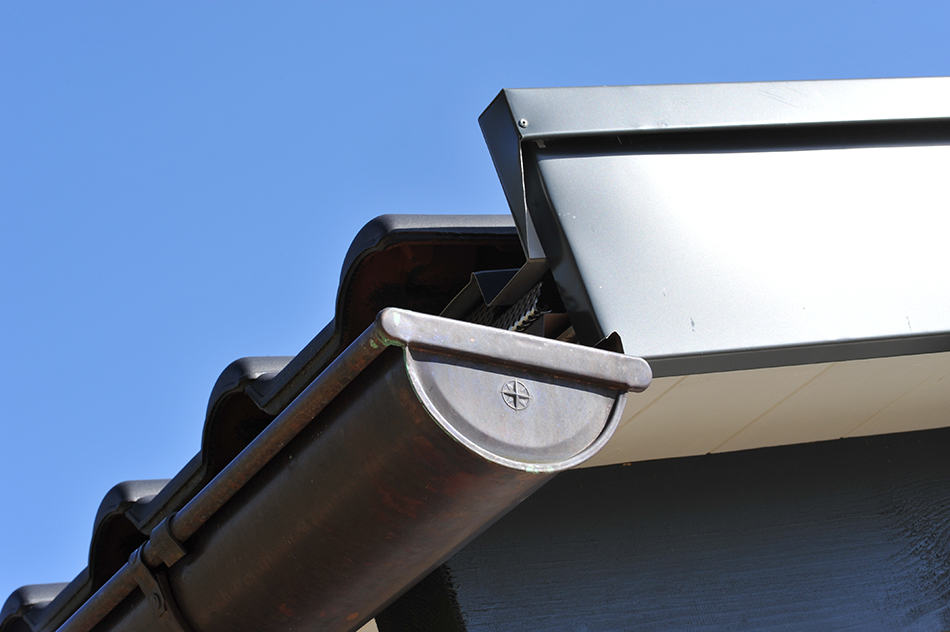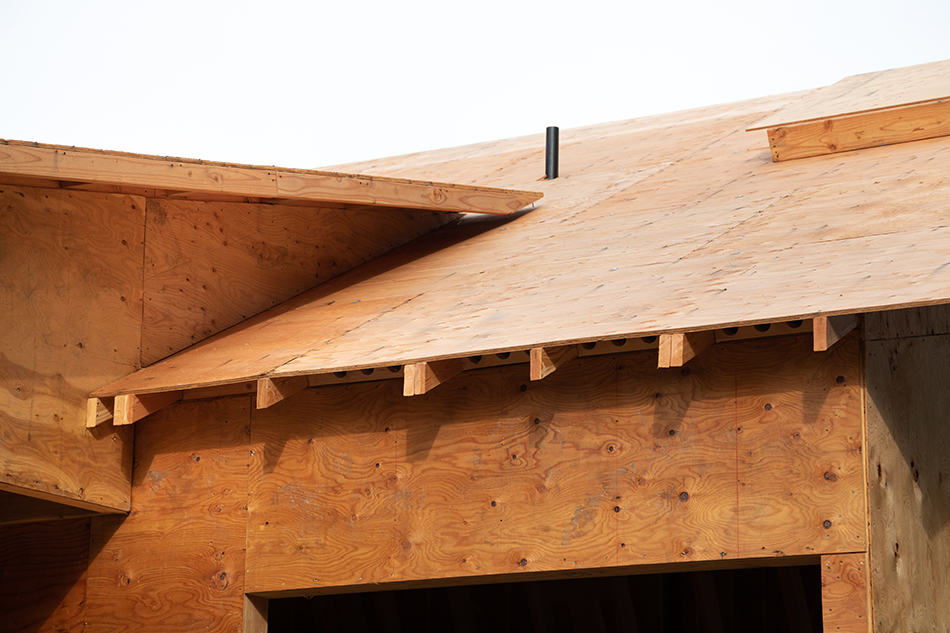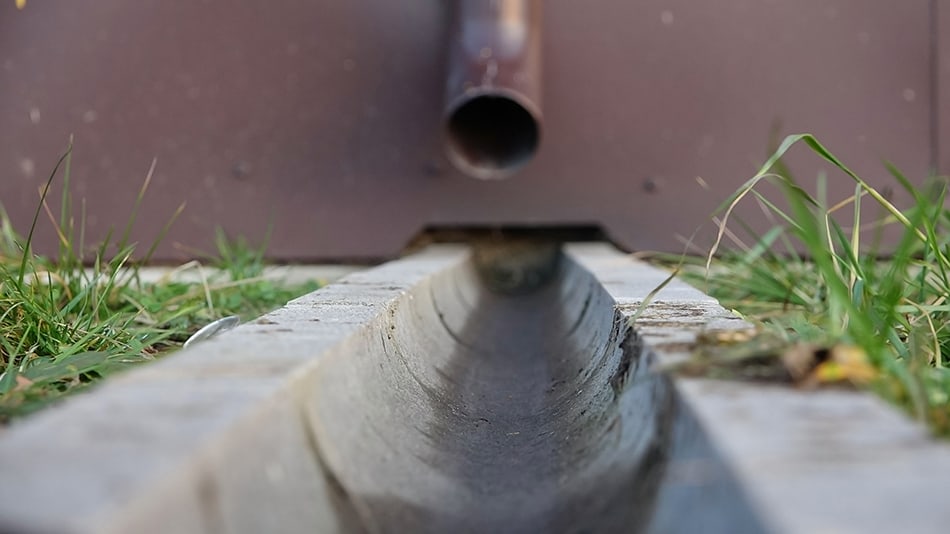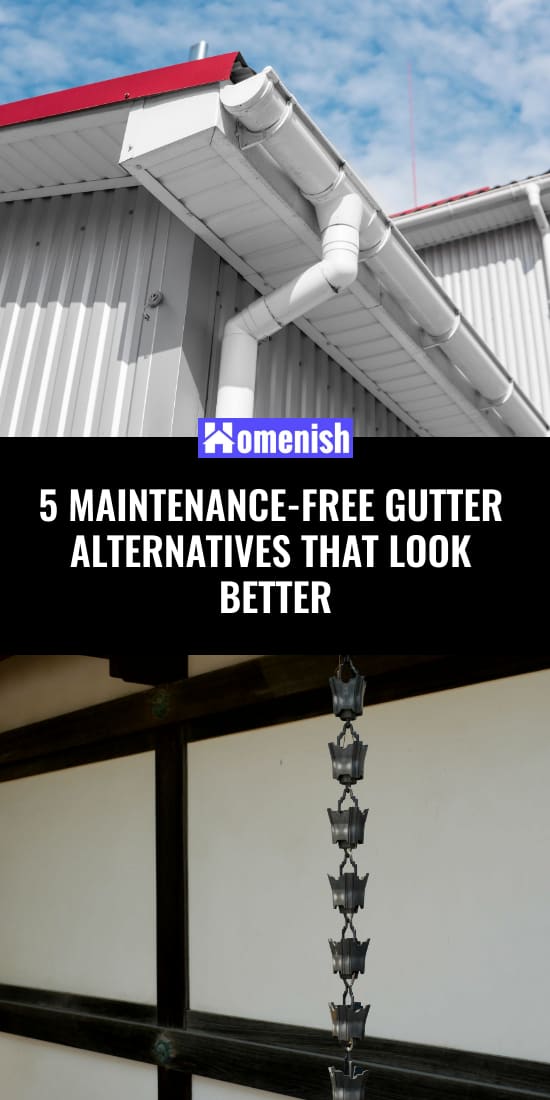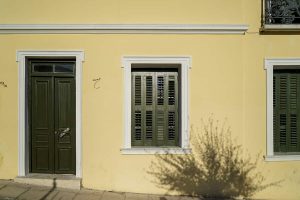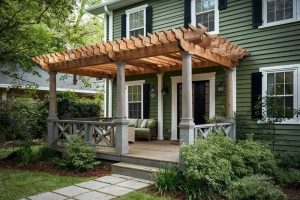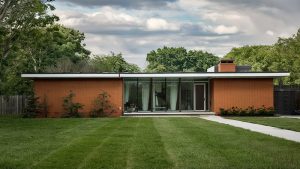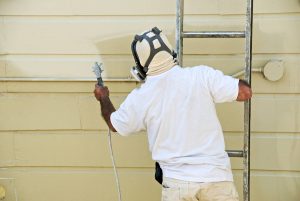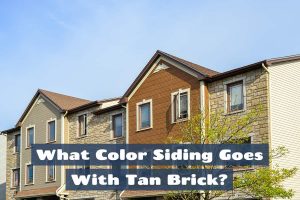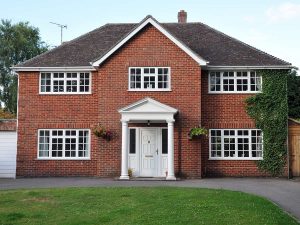Most homes come with traditional gutters to collect rainwater and protect the building’s foundation from destructive water seeps. While gutters and gutter parts have their advantages, they have their fair share of problems, from clogging up to cracking, and let’s not forget their less-than-appealing appearance.
But did you know there are better-looking gutter alternatives that don’t require as much maintenance as your current downspouts? I’ll show you the top 5 alternatives to gutters that will do the trick, including their pros and cons to help you make an informed decision.
5 Gutter Alternatives
1. Rain Cup Chains
Rain cup chains have been used by the Japanese for many centuries. This obviously proves that rain chains do the job right plus they are a better looking substitute for traditional downspout systems.
Rain cup chains work by collecting the roof’s rainwater and channeling it to barrels or similar on-ground reservoirs. This is done by the string of beautiful cups that hang down in a line. These cup chains not only direct the rainwater from the top to the bottom, but they also reduce the force in which water flows down.
Rain chains come in many different materials and designs, from brass cups to bronze, metal, or copper ones.
The main drawback of these gutter alternatives is their inability to handle large volumes of water. If you live in an area that’s prone to frequent downpours, these chains won’t be suitable – unless you place several large barrels for the water to pour into.
Pros
- One of the most attractive ways of preventing rain from damaging your home
- Rain chains can be placed in a sloping position to direct the rainwater to planters
- They slow down the flow of water so it doesn’t get splashed all over the ground
Cons
- Larger roofs will require lots of rain chains to work effectively
- If the rain chains freeze in icy conditions, their weight will increase and impact your roof
- Rain chains can’t handle large downpours
2. Grading
This gutter alternative is a DIY process that consists of sloping and shaping the earth around your home in order to guide the rainwater away from the property. Grading works best with clay earth and is a type of gutterless system for those on a low budget.
When done properly, grading can effectively help water flow away from your home and protect your foundation. Rather than using gutters, this substitute will improve the appearance of your home just like rain chains. But again, bear in mind that grading isn’t suitable for areas that have lots of heavy rainfall.
Pros
- Ensures water drains away from your home instead of sitting in your foundation
- If done correctly, it can improve your home’s appearance
- Ideal as a low-budget option
- Suitable for low-rainfall regions
Cons
- It’s not a permanent solution
- A lot of digging up around the landscaping is required to achieve a slope
- It won’t work if you have lots of mature trees around your home
- Over time, you will have to regrade around your home to ensure the slope is constant enough for water to drain away
- Time-consuming DIY process
3. Drip Edges
Drip edges are steel-strip attachments that are attached to the edge of the roof. These popular gutter alternatives act as an additional hurdle to reduce the force and speed of water flow. In addition, they prevent the rainwater from seeping close to your walls or splashing all over the bare ground.
Drip edges are installed between the roof deck and the shingle to prevent water from penetrating into the wood underneath the shingle. By installing drip edges, you won’t have to worry about water damage as these gutter substitutes provide extra support to the roof’s shingles.
This method is ideal for those who live in colder areas as you won’t have to worry about ice dams forming on the roof. It is also a reasonably affordable way to protect your home from rainwater damage.
Pros
- A great way to ensure water doesn’t sit close to your foundation or run down the side of your home
- Shingles get extra support, so you don’t have to worry about rot
- Drip edges seal a gap within the roof and block small animals’ access to the attic
- No ice dams will form on the edges of the roof
- Installing drip edges is inexpensive, so you can either take on the task yourself or pay someone to do it for you
Cons
- Adding drip edges to an already-built home can be difficult, if not possible. It will take more work, so if you’re not into DIY, it is best to leave the task to professionals
- Drip edges must be installed correctly in order to be most effective
4. French Drains or Ground Gutters
French drains are also known as ground gutters. Contrary to popular belief, these gutters don’t originate in France. The inventor’s last name was French, hence the name French drains. These gutter alternatives protect the home’s foundation and require minimal installation effort.
All you need to do is to dig a V-shaped trench at the drip line or the site where the rainwater falls down from your roof. You will then need to place a waterproofing membrane in the trench with a perforated pipe at the bottom. Fill the trench with gravel or pebbles to improve drainage.
The biggest advantage of French drains is that you won’t have to change your home’s appearance. They can be installed without being in the view of anyone. In fact, you’ll hardly know they exist. Furthermore, these drains can handle excessive ground moisture and prevent flooding.
French drains not only drain the rainwater away from your home, but they also help you get the most out of your lawn. This system is perfect for gardening as it saves you money on watering your lawn. It is also ideal for properties with poor drainage issues.
Pros
- The system can be hidden so no one will know it’s been installed
- It is one of the best ways to protect the siding and foundation of your home from rainwater damage
- French drains aren’t affected by freezing conditions, thus making them maintenance-free gutter alternatives
- If installed by an expert, these ground gutters will last for many years
Cons
- The materials and labor will prove to be costly
- If not correctly installed, the drains will be visible to the eye and jeopardize the beauty of your home
- There must be enough drainage in the system in order to prevent water from sitting near your walls and forming a pool at the base of the foundation
- If you decide to dig the trench yourself, this can be time-consuming. However, hiring a professional to do the work will increase the total cost of the project
5. Drip Path
Drip paths work by trapping the rainwater in a paved path. These paths are placed directly under the edge of the roof. They are constructed with bricks or concrete blocks in the soil to provide a hard surface for the falling rainwater. This helps reduce the water’s erosive effect. The bricks are placed in a slope-like manner to direct the water away from the house.
Before lining up the bricks, a concrete layer of at least 6 inches is necessary. This layer must be poured around the foundation to drain away the rainwater. The path will then be filled with large stones or pebbles to provide an underground drain.
Pros
- If installed correctly by a professional, drip paths are an attractive solution that ensure all the water runs off the roof and away from the foundation without eroding the soil
- Just like French drains, drip paths are installed on the ground so you won’t have to worry about ruining the look of your property
Cons
- If the drip path isn’t installed properly, for example, it doesn’t have the right slope, then the rainwater will not drain away from the foundation and cause damage
- There must be enough drainage underneath the drip path in order to ensure effectiveness. Large rocks work best as drainage
- Some people may be tempted to plant bushes or shrubs on the drip paths, however, the idea is to move the water away from the home. The presence of shrubs hinder the ability to drain water away.
Wrapping It Up
While traditional gutters may seem like the most common choice for directing rainwater away from your home, they are not your only option. If you’ve had enough of cleaning or repairing your gutters every year, and you want a low-maintenance, aesthetically pleasing alternative to downspouts, there are plenty of suitable and long-lasting products on the market.
Whichever gutter alternative you decide to go for, it is important to ensure it is properly fitted for long term protection of your home. Rainwater damage is highly destructive for your home’s foundation, so unless you live in a dry or arid climate where you don’t get any rain at all, you will need to think about the most suitable rain gutter system for your home.
